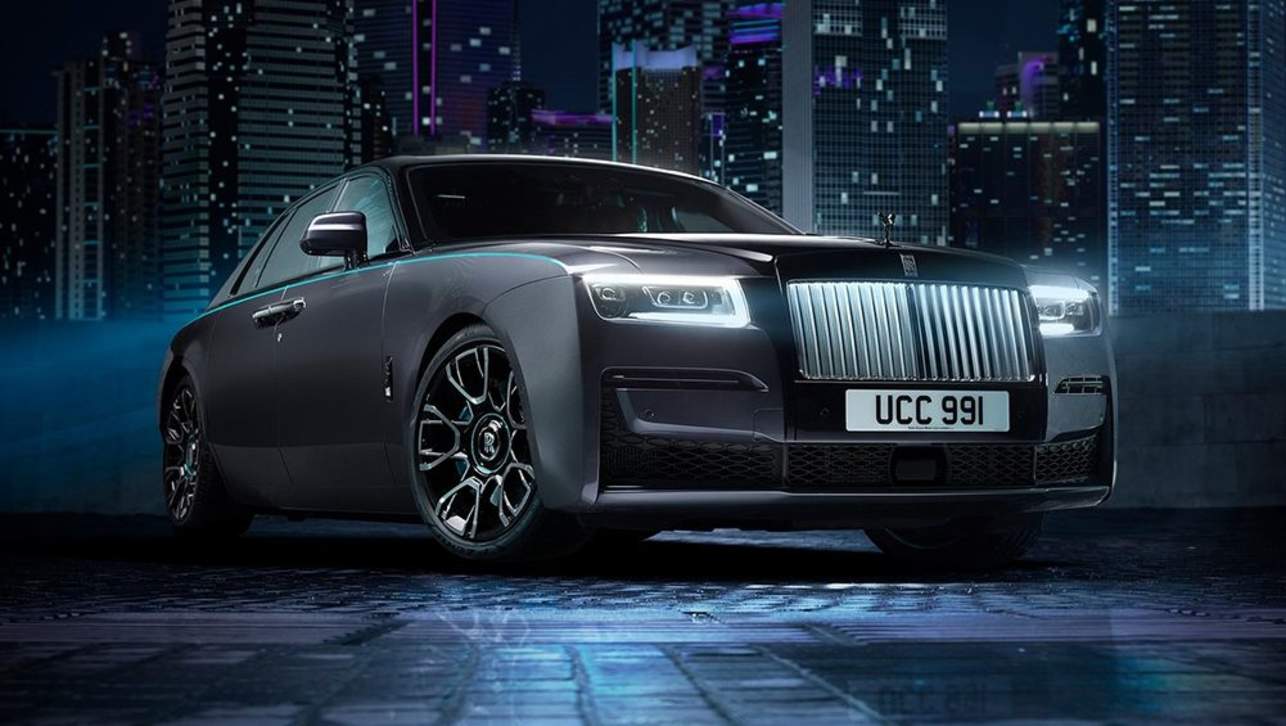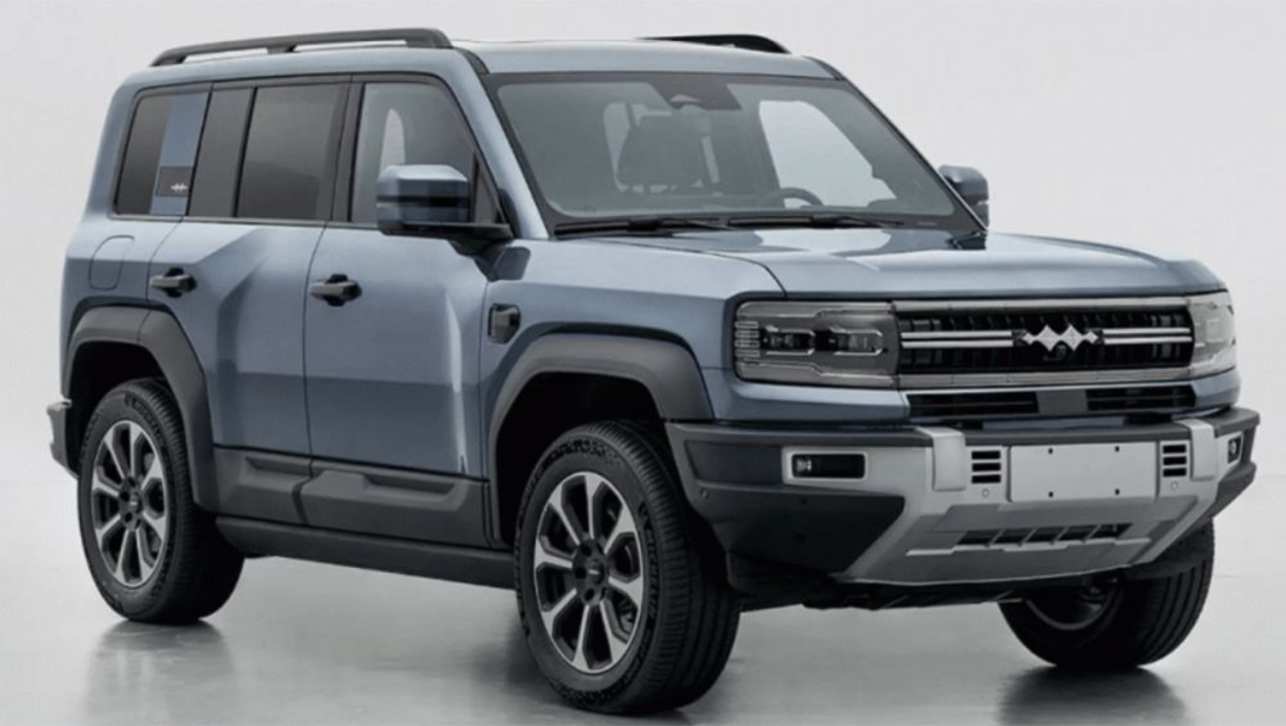Like Madonna, Bono and Oprah, the G-Wagon has become a mononym.
Officially it’s known as the Mercedes-Benz G-Class but to many it’s simply the G-Wagon - or even the G-Wagen, if you like to give it a German twist. That’s because the name stands for geländewagen, which translates as “terrain vehicle”, but ‘all-terrain vehicle’ is probably more apt.
The original G-Wagon was designed in the 1970s to be a truely ‘go-anywhere’ SUV, with four-wheel drive, differential locks and a ladder-frame chassis to ensure it was the toughest member of the Mercedes-Benz fleet. It hit the market in 1979 and was the German equivalent of the Land Rover Defender, with its utilitarian body and rugged underpinnings.
It soon became a popular choice for those who wanted a reliable, off-roader and in 1981 the Argentine Army added it to its fleet and in the 1980s Pope John Paul II had a mother-of-pearl 230 G become his personal ‘Popemobile’.
That was only the beginning of the modifications, though. In 1999 AMG introduced its own version of the G-Class (as it became known in 1993) and while it may seem an unlikely performance car, the G63 has been one of AMG’s most popular model’s ever since.
German tuning house Brabus elevated it even further with its own spin on the G-Class, the Brabus 800, which boasts a 588kW/1000Nm twin-turbo V8 under the bonnet.
As the G-Class served more time in the military, demands for more capability resulted in the extended 6x6 version, which swapped the rear rear end for a pair of portal axles to create an even more extreme off-roader. Naturally, that wasn’t the end of the story, because AMG did its own version, creating the G63 6x6.
After more than 40 years on sale the G-Wagon has become an icon of the car industry. Even though it started out as a German copy of the Land Rover, it’s now being imitated, with a specialised market for Suzuki Jimny G Wagon kits becoming increasingly popular.
Want to know more? Read on, because we have all of your G-Wagon questions answered below.
.jpg)
What is distinct about a G-Wagon?
While it shares some similarities with the Land Rover Defender, the Mercedes is a unique creation that has served the German brand for more than 40 years. The first generation G-Wagon - the W460 - lasted all the way from 1979 until 1992 with relatively few changes, before being replaced with the W461 in 1992. This was the same chassis with some updates to the front end styling and powertrains.
By this point the G-Wagon had become very popular with armed forces and there were several modified versions for military and police use around the world, even though it remained available to the general public. So in 1990 Mercedes introduced what has become known as the G-Class, a more luxurious model that is designed to appeal to the company’s traditional client base and pinch sales from Range Rover.
It was during this time that AMG jumped into the action and the G55, then G63 and 6x6 were born.
This model ran largely unchanged, from a platform point-of-view, from 1990 (with only limited differences compared to the ‘79 original) until 2018, when the current G-Class was introduced.
.jpg)
When Mercedes introduced the current G-Class (which is technically only the second generation model) it was forced to ask itself what is distinct about the G-Wagon, and ultimately what separates it from the more-recently introduced GLE-Class and GLS-Class SUVs it also offers.
The answer is off-road capability, with the new model retaining the ladder-frame chassis compared to the monocoque construction of its SUV siblings. However, Mercedes did update some elements, including fitting rack-and-pinion steering to replace the old models antiquated recirculating ball set-up, and there’s also independent front suspension which replaces the live axles.
Mercedes was forced to update the body, extending its length and width, but retained the same trademark looks that are synonymous with the G-Wagon/G-Class. The reason for the extra length was primarily down to a need to improve pedestrian safety, but the extra length as well as the wider body also helps its off-road prowess.
The interior of the G-Class was also updated from the original. The first-generation G-Wagen was all about functionality, so the cabin was spartan and featured hard-wearing materials. The newer model is more typical of what you’d expect to find in the rest of the Benz line-up, with a more modern design and plenty of leather.
What models of car are considered G-Wagons?
Mercedes-Benz Australia currently offers two versions of the G-Class in Australia - the G400d and the AMG G63. The G63 is the obvious hero model, and the one most people will recall when the G-Wagon name is mentioned, and is powered by the performance division’s trusty 4.0-litre twin-turbo V8 making 430kW/850Nm.
The G400d is aimed at those who value off-road ability over outright performance, swapping the V8 petrol engine for a 3.0-litre in-line six-cylinder turbo-diesel that makes 243kW/700Nm.
Previously the German brand offered its ‘G Professional’ range in Australia, which were more working-class versions of the first generation G-Wagon and were available with a cab chassis to appeal to fire fighters, ambulances, farmers and other industries that needed a rugged ute and SUV-style vehicle. These are not currently available with the second-generation model, with the 'W464' an updated version of the original G-Wagon specifically designed for military use. It's not built in right-hand drive so don't expect to see it in Australia anytime soon.
_0.jpg)
Can any other car brands (other than Mercedes) be considered a G Wagon?
No, the G-Wagon is a Mercedes-Benz trademark, but the German brand doesn’t actually build the off-roaders. Instead that is the responsibility of Austrian engineering firm, Magna-Steyr, which produces all of the current second-generation models.
This dates back to the original deal between Mercedes’ parent company, Daimler-Benz, and Steyr-Daimler-Puch, which was based in the Austrian city of Graz. The collaboration between the pair meant Mercedes handled the powertrains and design, while the Austrian team engineered its off-road chassis.

Are G-Wagons popular in Australia?
With the G-Wagon and G Professional models gone, the only models that remain are the G-Class duo - G400d and G63. With only two models and its unique character, it’s unsurprising that the G-Class is actually the least popular SUV model in the Mercedes-Benz Australia line-up; at least in terms of sales.
Sales have been impacted in 2020 and 2021 by the effects of the global pandemic so it’s hard to accurately gauge the demand for the model. But compared to its stablemates, the G-Class is averaging 54 sales per month in 2021, with the GLS-Class approximately 86 per month and the GLE-Class wagon 290.
.jpg)
Why does the Australian Defence Force use G-Wagons?
One of the biggest Australian customers for the G-Wagon is the army, which has a fleet of both 4x4 and 6x6 vehicles. It has a variety of body styles, including 4x4 single-cab vans and dual-cab wagons, as well as 6x6 single-cab and double-cab options.
The 6x6 are used in a variety of capacities for the army including cargo hauling, canine transport, ambulances, surveillance and reconnaissance and even mobile command posts.
The army purchased the first generation G-Wagons to update its ageing fleet, which was previously dominated by Land Rover models. It claims the new models increase the capability and range for deployments, thanks to the greater off-road performance of the Mercedes compared to the former British-built vehicles.
In all the army bought 2146 G-Wagons, with each model built in Graz, Austria but modified in Australia for the army’s specific needs.

What are G-Wagons designed to do? What kind of situation or use is a G-Wagon good for? What makes a good G-Wagon?
Well, that largely depends on what you want your G-Wagon to do. The AMG G63 certainly looks tough, sounds amazing and drives quickly. It’s become a fashion statement as much as a vehicle, popular amongst well-heeled customers in posh suburbs, most commonly in black or white just to ensure the owner stands out in traffic.
However, the likes of the G400d and, specifically the first-generation G-Wagon, are designed to go-anywhere, capable of tackling some of the most extreme conditions imaginable as long as you know what you’re doing behind the wheel.
Or, to put it another way, the Mercedes G-Wagon should be able to take you from Sydney to Perth without using any sealed roads. Even though the current model isn’t quite as rugged as the original, it should still have little trouble driving across rivers, up steep embankments, through muddy trails and scrambling over rocks - that’s what makes a good G-Wagon.
.jpg)
Where can you buy them from? How much does a G-Wagon cost?
You can purchase a G400d or AMG G63 through your local Mercedes-Benz Australia dealer.
However, despite the working-class background, the three-pointed star on the bonnet means the G-Class doesn’t come at an affordable price.
The G400d starts at $233,776, while the G63 begins at $298,876 (both prices exclude on-road costs).


.jpg)
.jpg)


.jpg)
.jpg)

.jpg)
 copy.jpg)
.jpg)
.jpg)


.jpg)



.jpg)
.jpg)

.jpg)

.jpg)




Comments